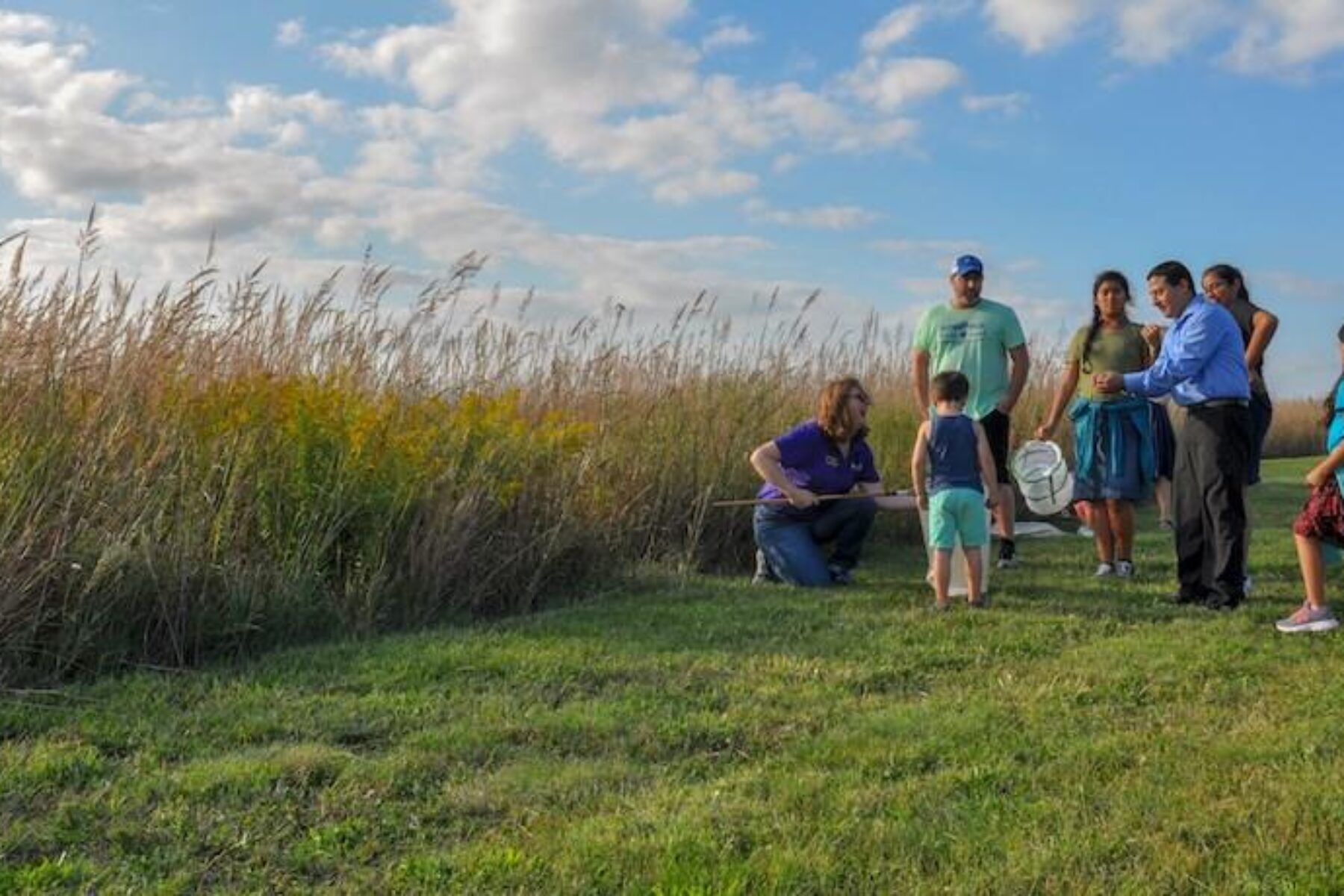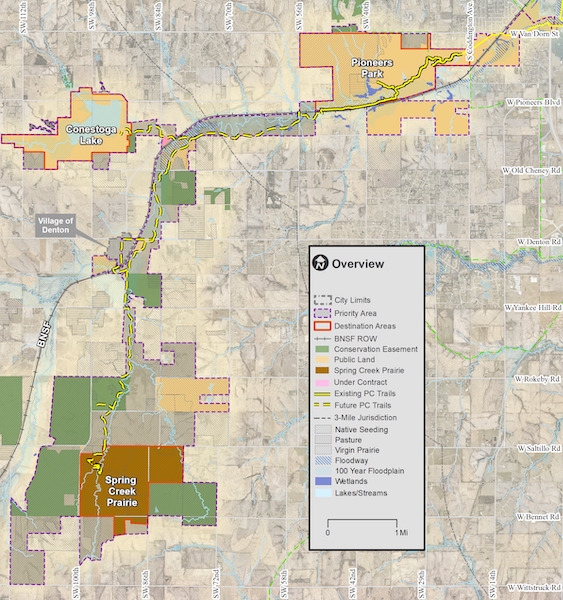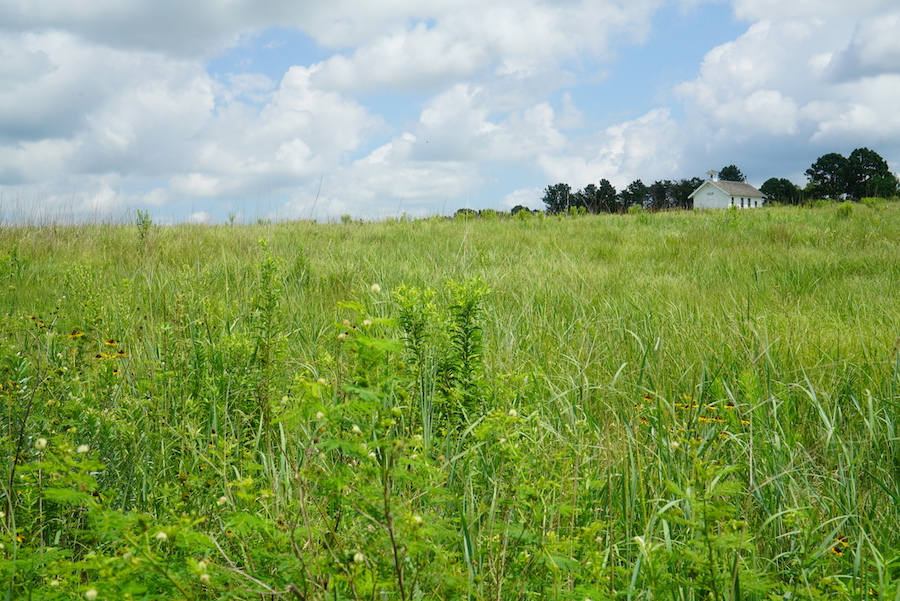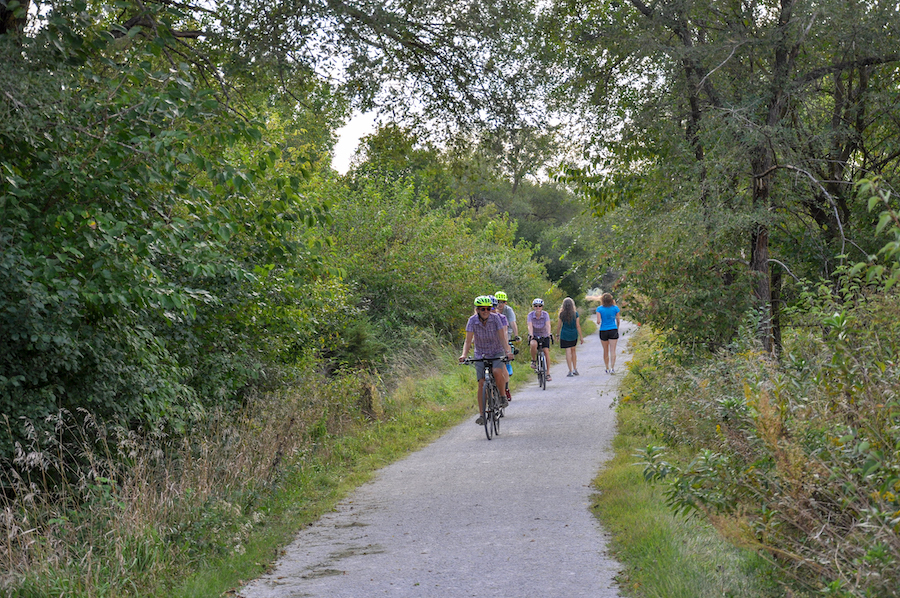Developing Trail in Lincoln Celebrates Nebraska’s Tallgrass Prairie Legacy

On a warm, sunny day, songbirds call to each other in the tall grass, dotted with purple phloxes and yellow coneflowers. Insects buzz while bison graze, and critters like prairie dogs rustle through the brush as they scurry along.
Welcome to Nebraska’s tallgrass prairie, a rapidly disappearing ecosystem that Nebraskans are racing to preserve—and they hope to do just that with a new corridor and trail: the Prairie Corridor on Haines Branch.
“The tallgrass prairie is our natural identity. It is where our roots still run strong and deep.”
—Michael Forsberg
Preserving a Great Plains Legacy

Before westward expansion, vast amounts of tallgrass prairie used to cover the great state of Nebraska. This ecosystem supported a highly diverse array of insects, birds and mammals. The tallgrass prairie contributed to fertile soils, which now support some of the most productive agricultural land in the world. However, this productivity has also contributed to an immense loss of prairie habitat, and less than 2 percent of Nebraska’s tallgrass now remains.
Tallgrass prairie restoration has been a priority in Nebraska for the past 80 years, beginning with the establishment of the Homestead National Monument and growing into a substantial movement since that time.
“The tallgrass prairie is our natural identity,” said Michael Forsberg, a conservation photographer and Prairie Corridor Cabinet Leader, which holds an endowment to fund future preservation efforts. “It is where our roots still run strong and deep.”
The Prairie Corridor project has preserved more than 5,000 acres of land so far, working carefully and respectfully with landowners who participate voluntarily through donation, sale or conservation easements, or by enhancing the prairie resources on their own land.
A key component of the project is the in-progress 14.5-mile Prairie Corridor trail, which—spanning from Pioneers Park in Lincoln to Spring Creek Prairie Audubon Center near the Village of Denton, just outside of southwest Lincoln—will be part of a 134-mile regional trail network when complete. A project of the Lincoln Parks and Recreation Department and other local partners, the Prairie Corridor trail will provide opportunities for conservation, education and economic growth, serving as a reminder of the community’s vibrant history and brilliant future.
A Conservation + Education Asset

The thousands of acres of tallgrass prairie, saline wetlands and riparian corridors included in the Prairie Corridor are crucial for the environment and communities in Nebraska—where there is limited prairie remaining. A report published by The American Bird Conservancy on species conservation in the dissected plains states that priority species need approximately 10,000 acres of land with a core-area of 2,000 acres to thrive.
The Prairie Corridor encompasses 7,800 acres of land with a wide diversity of plants and animal species. Education about, and access to, the tallgrass will play vital roles in preserving the prairie; more than 22,000 school children currently visit Pioneers Park Nature Center and Spring Creek Prairie Audubon Center for school hikes over the course of a year, and the expansion provided by the Prairie Corridor trail will increase their access to educational opportunities, instilling an appreciation of heritage and fostering a sense of pride in their community.
Once the Corridor is established, collaborative research partnerships will also be able to gather additional information into this treasured ecosystem and provide the knowledge base necessary for sustaining these resources.
Generating New Economic Opportunities in the Lincoln Area

Nebraska relies on recreational tourism as a key part of its economy, and the project partners anticipate that the Prairie Corridor trail will capitalize on this benefit. A report created by ECONorthwest on Natural-Resource Amenities and Nebraska’s Economy stated that the two major barriers faced by Nebraska in expanding their recreation industry are environmental degradation and access. The Prairie Corridor’s vision addresses both issues, aiming to become the largest tallgrass prairie accessible from the I-80 corridor and a landmark destination for visitors of Nebraska.
The connection of Pioneers Park in Lincoln to Spring Creek Prairie south of the rural village of Denton will increase access to trails and community destinations, building on existing ecotourism. A college town with a population of more than 280,000, Lincoln is a prime location for new trail tourism. The Prairie Corridor trail will also connect to the larger 134-mile trail network in the Lincoln area, including the developing MoPac Trail, which spans a total of 27 miles in disconnected segments.
Doug Ganz, vice president of Pinnacle Bank and a supporter of the project, says, “I believe this project could be viewed from the business community perspective as one of labor supply.” While Lincoln has one of the lowest unemployment rates in the country—2.6 percent compared to the national average of 4 percent—many businesses struggle to fill positions.
Businesses in Lincoln are “competing against Omaha and Minneapolis and Des Moines and Denver to some extent” for skilled workers, said Ganz, adding that the Prairie Corridor will be a helpful tool for human resources recruiters. “The demographics that our businesses are looking for are 25- to 35-year-old, college-educated, healthy, active people who love to run, hike and bike, and are environmentally conscious. These are the people who are coming to Lincoln hopefully to help our businesses continue to grow and allow our community continue to thrive.”
Prairie Corridor on Haines Branch from Cromwell Communications on Vimeo.
As individuals, businesses, education centers and governments come together, it seems as though the project is destined for great things, with everyone in the community having something to gain from the creation of the Prairie Corridor trail.
When complete, the project will serve as far more than a key preservation asset in Nebraska—promoting economic development through ecotourism, attracting new skilled workers to Lincoln, providing increased education and access in a sustainable way, and serving as a regional community asset that locals and visitors will be able to experience for generations to come.
Trails Transform America
We have a message for Congress: Trail networks are as fundamental to America’s transportation systems as roads and rail lines and deserve robust federal investment.

Donate
Everyone deserves access to safe ways to walk, bike, and be active outdoors.